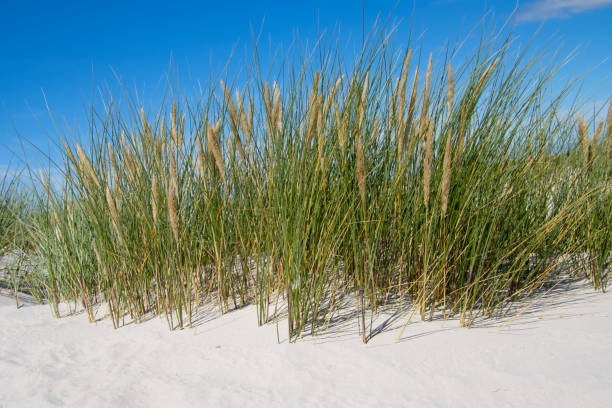Why do people plant marram grass on sand dunes?
Ammophila is a flowering plant genus that includes two or three grass species that are remarkably similar. These grasses are also known as marram grass, bent grass, and beachgrass. These grasses are nearly entirely found on the first line of coastal sand dunes. Their large subterranean stems or rhizomes allow them to survive amid shifting sands and severe winds, as well as to assist stabilize and prevent coastal erosion.
Marram grass is a hardy perennial grass that is frequently planted to assist maintain shifting sand dunes. Dry sand is continually moving and drifting between the water's edge and the beginning of the dunes. Marram grass, commonly known as beach grass, is one of the few plants that can grow in this windy climate. It spreads its tuberous roots just beneath the sand's surface, forming a subterranean web that helps keep the sand in place. This permits the dirt to settle and the dune to rise.












